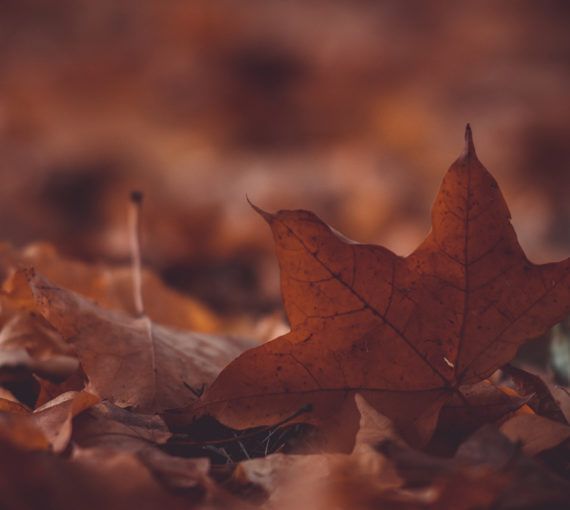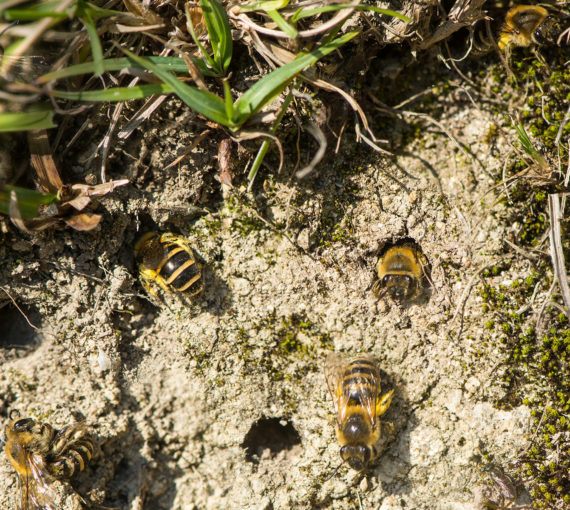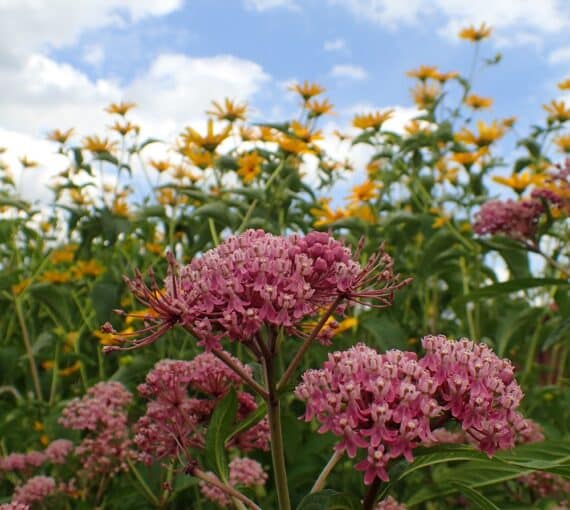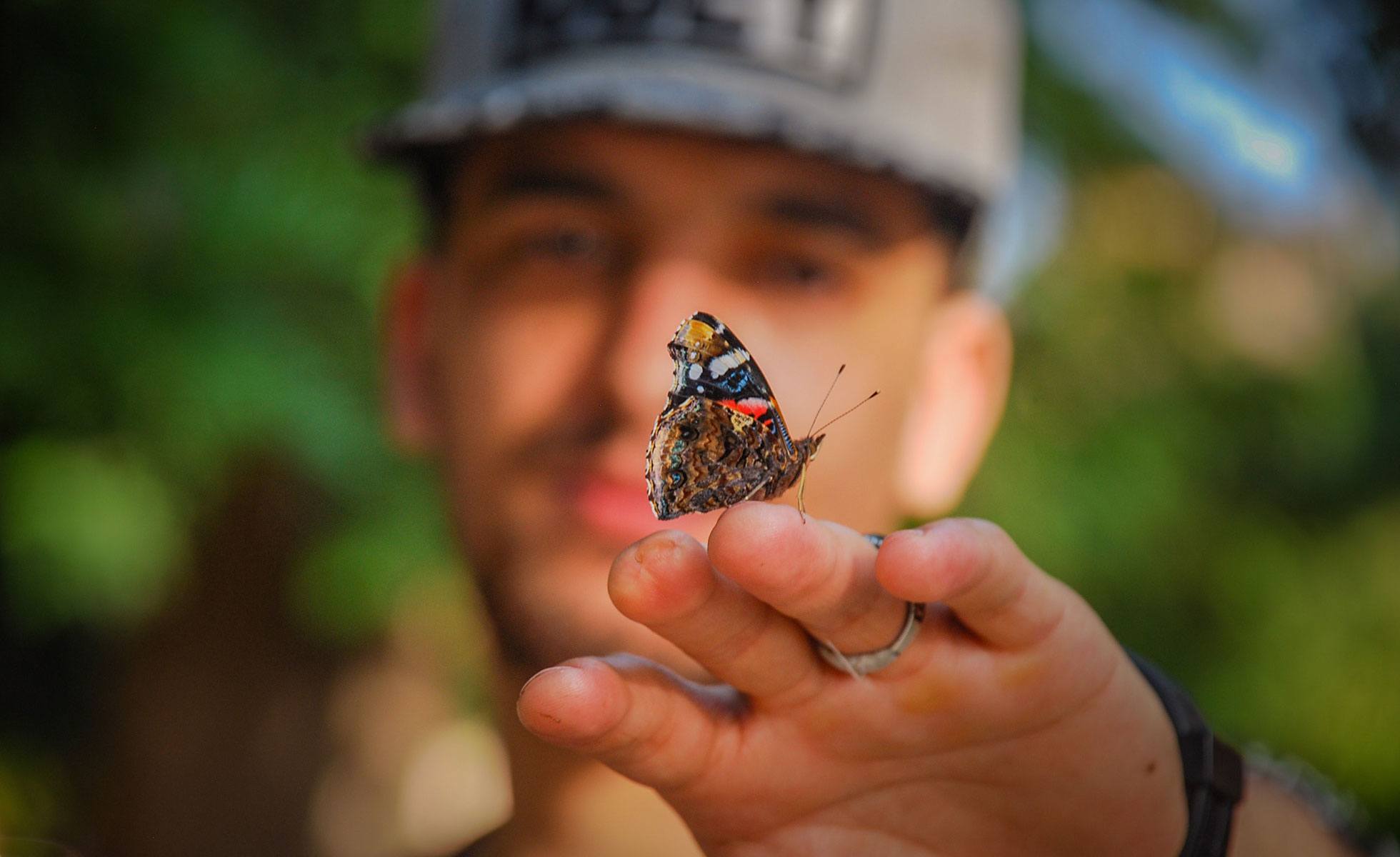
Most butterflies only live a week. Make those few precious days count — plant a butterfly garden!
All gardens are not created equal. Just ask any butterfly.
Creating and restoring butterfly habitat offsets what development, roadside mowing or wetland drainage have destroyed. (Gardening pesticide-free helps, too.)
Whether you have a small plot in the big city or a few acres, transform your yard into a butterfly garden!
Many butterfly species don’t migrate. You can provide habitat and food for their entire life cycle — eggs, larvae, pupae AND adults — throughout the year.
Think beyond providing flowers for nectar in the height of summer.
What you'll need
Host plants
Adults need a place to lay eggs where their caterpillars will forage. (Plant species that will get eaten and not just look pretty!)
Mud puddles
Some butterflies rarely visit flowers. They prefer mud, poop (a.k.a. “scat” or “dung”), sap and rotting fruit.
Overwintering habitat
Consider not raking leaves to provide a butterfly nursery! Most butterflies in Canada overwinter as caterpillars, others as pupae. A few species winter as adults, hibernating in hollow trees, under bark and firewood piles, or in garden shed cracks and crevices. Few spend winter as eggs.
Blooms from spring through fall
Don’t limit your garden to an end of July color extravaganza. You’ll need a diversity of native nectar plants to flower over a few months.
Sunshine
Make sure you (or your neighbours) have sunny spots.
Nectar plants
Most butterflies will feed from more than a few plant species.
Think about the role of your yard
Is it a habitat source (high-quality patch that supports population increases)? Or is it more of an island?
Some yards can provide for one butterfly species’ entire life cycle. Some are disconnected from other habitat patches.
Walk around the block and view your neighbourhood through a butterfly’s eyes. Chat with your neighbours and see what they’re planting. Note possible connecting corridors between butterfly-friendly patches. Can schoolyards, boulevards and local green spaces help support butterflies?
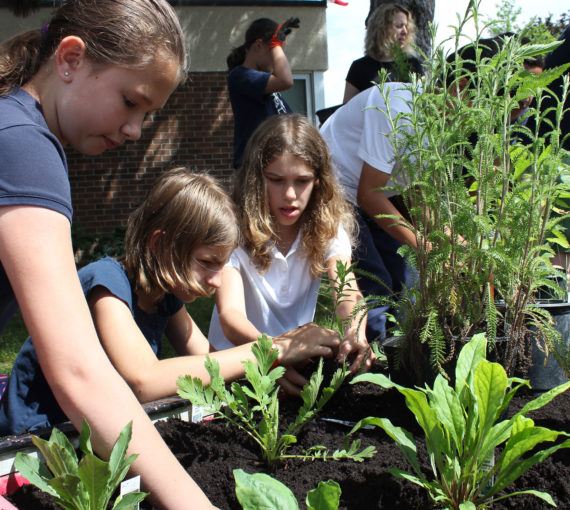
The Butterflyway Project
The Butterflyway Project is a citizen-led movement growing highways of habitat for bees and butterflies across Canada, one butterfly-friendly planting at a time.
Volunteer Butterflyway Rangers have connected with neighbours, schools, libraries, businesses and city agencies to increase pollinator awareness and action and to create habitat gardens in towns and cities across the country.
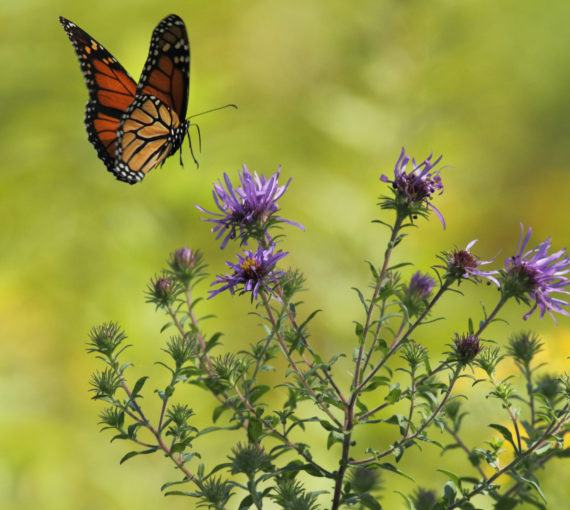
Did you know?
- Sunny days are best for butterfly watching.
- Some individual butterflies live only a week, but the flight season for a species may be more than a month. The migrating monarch “super generation” may live for several months.
- Butterfly season can run from as early as March (in B.C.) through October.
- Females are slightly larger than males — because she carries the eggs!
- Butterflies and hummingbirds share many nectar flowers, so efforts to lure one may attract both.
How to attract some common butterflies
Butterflies need nectar plants for food and host plants to lay their eggs.
Tiger swallowtails
Tiger swallowtails choose nectar plants like lilacs or bee balm; nearby willow, alder, aspen or apple trees can host larva.
Painted ladies
Painted ladies choose nectar plants like aster, cosmos or zinnia; host plants include lupines, native thistle, mallow or hollyhock.
Monarchs
Monarchs choose nectar plants like milkweed, lilac, goldenrod and cosmos; host plants include the milkweed family.
To attract butterflies like the red admiral, tiger swallowtail and mourning cloak, you can also set up a nectar feeder using a solution of one part sugar to 18 parts water.

